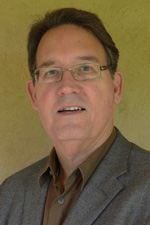Dowell Myers, Ph.D.
 is a professor of policy, planning, and demography in the Sol Price School of Public Policy at the University of Southern California, where he also directs the PopDynamics Research Group. Myers holds his PhD from MIT (with substantial work in demography at Harvard University), and he also attained a Master of City Planning from UC-Berkeley, as well as a BA from Columbia University in anthropology.
is a professor of policy, planning, and demography in the Sol Price School of Public Policy at the University of Southern California, where he also directs the PopDynamics Research Group. Myers holds his PhD from MIT (with substantial work in demography at Harvard University), and he also attained a Master of City Planning from UC-Berkeley, as well as a BA from Columbia University in anthropology.
Professor Myers is an interdisciplinary scholar who links scientific knowledge to applied problem solving. Grounded in demography and future-oriented urban planning, he specializes in temporal models for better understanding urban change. He is well known for his work on the interaction between demographics and many aspects of public policy, particularly housing and immigration. His 2007 book, Immigrants and Boomers: Forging a New Social Contract for the Future of America, has been widely heralded for its linkage of two seemingly unrelated demographic forces of change, aging baby boomers and immigrant integration. In the planning field, his program of research has pursued two sustained contributions: bringing people back in as the focus of planning success, and emphasizing planning as a temporal process of developing the future. With colleague John Pitkin he has carried out the series of California Demographic Futures projections that describe present and future population changes in greater detail than attempted elsewhere in the United States. Myers has described the drama of California’s changing demography as a window on future changes in the United States and the rest of the developed world.
Through the PopDynamics Research Group, Myers publishes three to four major reports each year on newly emerging issues in California. Myers also sits on several editorial boards and has published recent scholarly articles in Boom: A Journal of California, the Journal of the American Planning Association, Demography, Social Science and Medicine, International Migration Review, and Urban Studies. His public essays in recent years have appeared in the New York Times, the Sacramento Bee, the Los Angeles Times, and Zocalo Public Square.
